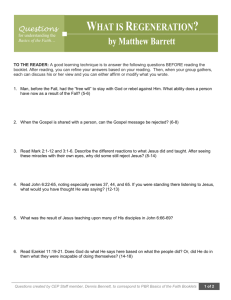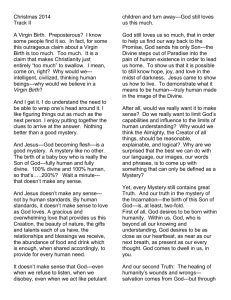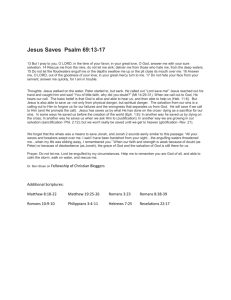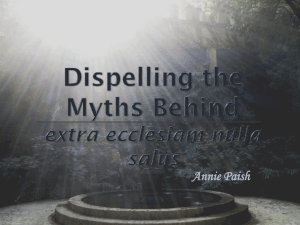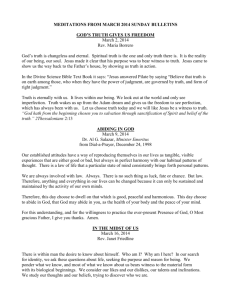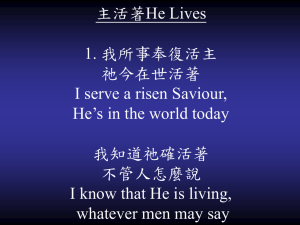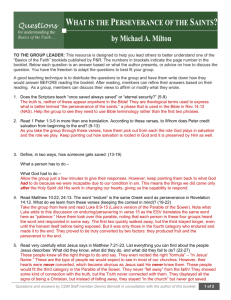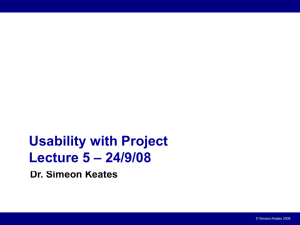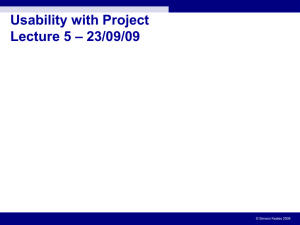CHRISTMAS SERMON 2009 - Diocese of Leicester
advertisement
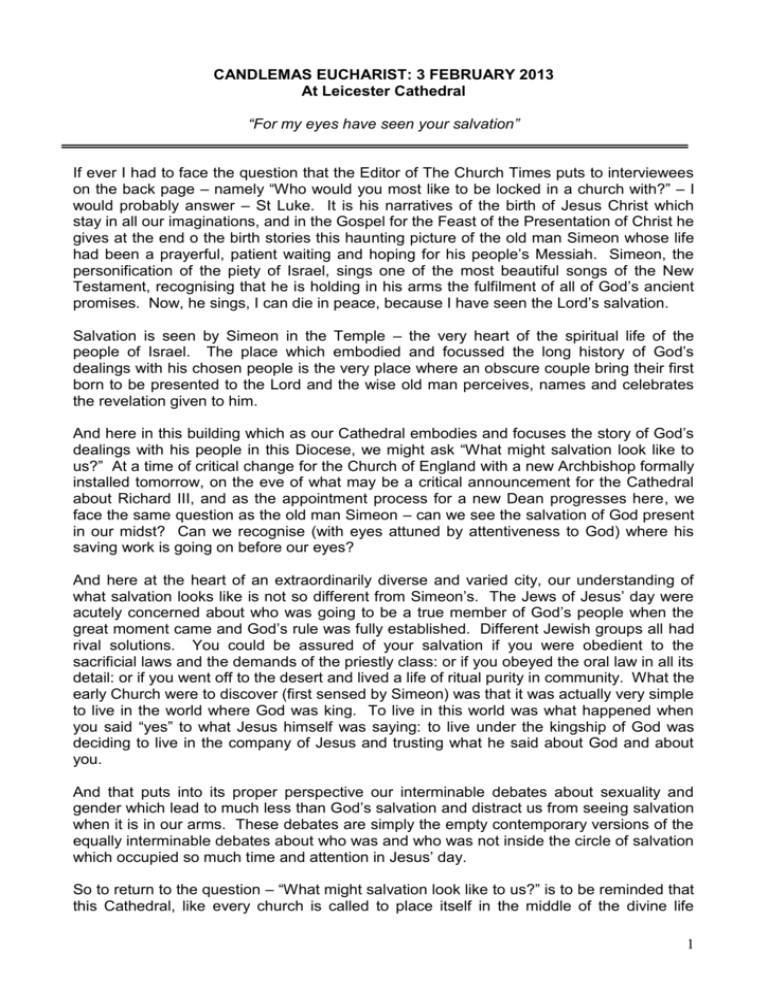
CANDLEMAS EUCHARIST: 3 FEBRUARY 2013 At Leicester Cathedral “For my eyes have seen your salvation” If ever I had to face the question that the Editor of The Church Times puts to interviewees on the back page – namely “Who would you most like to be locked in a church with?” – I would probably answer – St Luke. It is his narratives of the birth of Jesus Christ which stay in all our imaginations, and in the Gospel for the Feast of the Presentation of Christ he gives at the end o the birth stories this haunting picture of the old man Simeon whose life had been a prayerful, patient waiting and hoping for his people’s Messiah. Simeon, the personification of the piety of Israel, sings one of the most beautiful songs of the New Testament, recognising that he is holding in his arms the fulfilment of all of God’s ancient promises. Now, he sings, I can die in peace, because I have seen the Lord’s salvation. Salvation is seen by Simeon in the Temple – the very heart of the spiritual life of the people of Israel. The place which embodied and focussed the long history of God’s dealings with his chosen people is the very place where an obscure couple bring their first born to be presented to the Lord and the wise old man perceives, names and celebrates the revelation given to him. And here in this building which as our Cathedral embodies and focuses the story of God’s dealings with his people in this Diocese, we might ask “What might salvation look like to us?” At a time of critical change for the Church of England with a new Archbishop formally installed tomorrow, on the eve of what may be a critical announcement for the Cathedral about Richard III, and as the appointment process for a new Dean progresses here, we face the same question as the old man Simeon – can we see the salvation of God present in our midst? Can we recognise (with eyes attuned by attentiveness to God) where his saving work is going on before our eyes? And here at the heart of an extraordinarily diverse and varied city, our understanding of what salvation looks like is not so different from Simeon’s. The Jews of Jesus’ day were acutely concerned about who was going to be a true member of God’s people when the great moment came and God’s rule was fully established. Different Jewish groups all had rival solutions. You could be assured of your salvation if you were obedient to the sacrificial laws and the demands of the priestly class: or if you obeyed the oral law in all its detail: or if you went off to the desert and lived a life of ritual purity in community. What the early Church were to discover (first sensed by Simeon) was that it was actually very simple to live in the world where God was king. To live in this world was what happened when you said “yes” to what Jesus himself was saying: to live under the kingship of God was deciding to live in the company of Jesus and trusting what he said about God and about you. And that puts into its proper perspective our interminable debates about sexuality and gender which lead to much less than God’s salvation and distract us from seeing salvation when it is in our arms. These debates are simply the empty contemporary versions of the equally interminable debates about who was and who was not inside the circle of salvation which occupied so much time and attention in Jesus’ day. So to return to the question – “What might salvation look like to us?” is to be reminded that this Cathedral, like every church is called to place itself in the middle of the divine life 1 which Jesus uncovers for us. As Rowan Williams has put it: “When we think of life in the Church, perhaps we ought to think less in terms of signing up to a society an d more in terms of swimming in an overwhelming current of divine loving activity.” And that is the privileged call of every church, but here in the Cathedral the opportunities to create that sense for others of being placed in the middle of the divine life are almost endless. The music, the liturgy, the preaching, the ordering of the building does that, but so too do the multiple other occasions when as a Cathedral community you have an opportunity to enable others from other faiths, from the civic community, for City and County, from universities, from almost every section of society to come to this place and to “see salvation”. And if, as we may hope or expect, tomorrow’s announcements do indicate that a fallen king is in due course to lie here in this Cathedral then those opportunities will increase and grow in the years ahead. Seeing salvation engages and perplexes our society. While consistent church attendance may be falling, the intersection of faith and culture occupies the attention of the media as much as ever. We live amongst a people searching (often vainly) for salvation. Yet Simeon’s witness is a reminder that this kind of seeing is not cost free. This, he says to Mary, is a sign that will be opposed and a sword will pierce your soul. The old man would have been aware of the prophecy of Malachi delivered to his people after the experience of exile and defeat. God, he announces, will suddenly come to his Temple. He will purify the descendants of Levi and refine them like gold and silver. That process of refining would have involved heating metal alloy in a crucible until the alloy became translucent and the gold or silver separated out and fell to the bottom of the bowl. Then the refiner, looking into the refiner’s fire would see his own image reflected back to him. So does God refine his people through the challenges, the suffering, the uninvited pains of being alive. Simeon the old man knew this in his own experience. And he knew that the salvation which he saw could not be effected without suffering. And as the Church’s eyes turn forward now to Lent and Easter that is the message which this feast confronts us with. What Simeon sees in the Temple is what we can see and reveal to others in this Cathedral. The only point about any church, especially one with the responsibilities and opportunities of this one is that its life and work points in one way or another to Jesus Christ. To the places where the eternal reality of selfless divine love and gift is to be seen in the world. That’s the task of this place in the gathering of the community around the Lord’s Table, in the gathering of City and County to hear God’s word and to celebrate His life. Simeon in the Temple sees a glimpse of heaven in his own arms. And heaven is what is indeed laid open when the Church is truly the Church. And when the Church is most clearly committed to the work of transforming the earth that heaven becomes most clear. In all the challenges and opportunities which lie before us in this place may we be given grace to see what Simeon saw, to know what he knew, and to declare what he declared: “My eyes have seen your salvation.” 2
